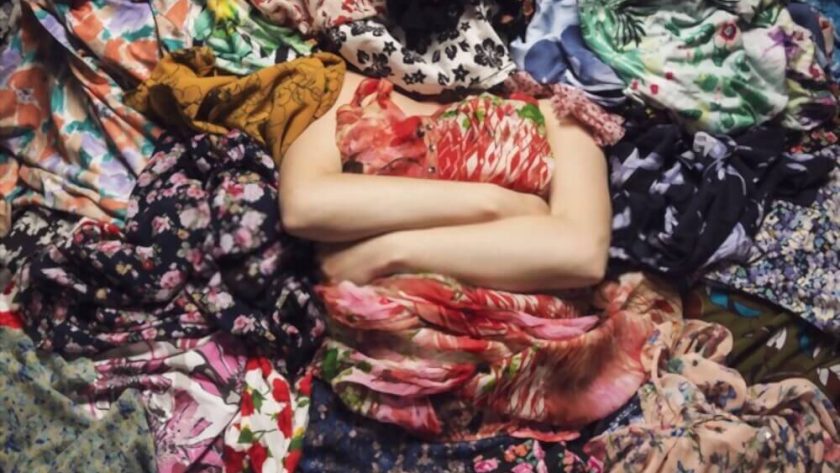About 90% of the fast fashion clothing purchased in the United States was also produced here until the 1960s. Since that time, it has decreased to barely 3 percent. In order to pay lower rates for the manpower that is required for the creation of apparel, businesses have increasingly opted to outsource their labor to nations with loose labor regulations (or a willingness to disregard them).
The change in the fashion business that has led to quicker manufacturing at cheaper prices is referred to as “fast fashion.” This move seems to be quite advantageous at first appearance, especially for the average American customer. We can spend less money and purchase more clothing.
Why Does Fast Fashion Opt. For This Route?
Outsourcing Fast Fashion Manufacturing To Low-cost Workers
It is well-known that fast fashion businesses subcontract their manufacturing to underdeveloped countries like Bangladesh, India, and Indonesia due to the availability of inexpensive labor there.
The legislated base salary for textile employees in Bangladesh, one of the least expensive locations for the fashion industry, is 8,000 taka ($94) per month. That is far less than the $189 projected livable income, which would cover a family’s food, housing, and schooling expenses.
Fast Fashion Retailers Use A Volume-based Business Strategy
Fast-fashion retailers command large volumes of clothing from their producers, which lowers the cost per unit. They don’t rely on custom clothing manufacturers; they want mass production at a meager amount that too with fast turn-around.
This further lowers the price per clothing because mass orders for the material and components (such as zippers and hooks) are now possible.
How many fast fashion outfits produced annually, do you realize? One of the biggest fast fashion conglomerates in the world, Zara, created and sales more than 450 million items in 2018.
The Cloth is Cheap and of Meager Quality
Given that they made effectively in massive quantities from inexpensive basic materials, synthetic materials (such as Nylon, Polyamide, Lycra, and Acetate) are less expensive than plant fabrics (such as Cotton, Wool). Cotton is often the most expensive cloth in the marketplace, closely by polyester.
“Petroleum products make up 63% of textile fibers,” says the report. (2018) Journal of Cleaner Production. Refurbished synthetic fibers are a preferred choice because the creation of these synthetic textiles pollutes the ecosystem heavily. However, regenerated polyester ends up costing much more than wool.
Clothing Employees are Paid by the Piece Rather Than the Hour
Do the fashion industry and poor working circumstances occur Not only elsewhere but also right here in the States. Technically, L.A. is the country’s center for clothing manufacturing.
Rather than receiving the basic wage, laborers in Los Angeles are paid a piece rate of 2 to 6 cents per item. The majority of textile workers put in 60 to 70 hours a week, with a take-home income of roughly $300.
Additionally, under this arrangement, laborers run the possibility of going without pay when their products fail quality inspection. That is why if applications like fashion design apps installed so all clothes pass through an infra-red detector and workforce saved.
A Lot of Cloth is Cut for Clothing
Mass creations that are completed rapidly are known as fast fashion. This implies that clothing cutters use a cutting machine to simultaneously cut a large number of clothes for a single garment type.
It is worthwhile to try on many reasonable-sized variations of a dress if, for instance, you try it on and it doesn’t fit properly.
The way the cloth is cut determines the variances in an item that is the same size. Because the bottom pieces of cloth aren’t cut as precisely, the shape is inaccurate.
Customers Want Affordable, Fashionable Clothing
Due to the abundance of cheap goods in both the apparel and other sectors of the economy, such as the food service industry, our brain has been conditioned to believe that spending more is a rip-off.
According to research by the e-tailing organization, 94% of online customers prepared to put in the time to surf around for the best deal while making a purchase.
Fast fashion is an obsession for so many people since it provides instant gratification. Moreover, we aren’t even required to feel bad about buying it more frequently because it is reasonably priced.
However, we now understand that the sale price does not accurately reflect the true cost.
Among Fast Fashion Merchants and Producers, There Aren’t any Agreements
Apparel retailers collaborate without lengthy, legally-binding agreements with manufacturers that provide the best pricing. The clothing business, which frequently collaborates with upwards of 3,000 vendors, offers a few advantages. On the one side, in order to remain viable, the producer must provide cheaper pricing. On the other hand, if a controversy involving one of the producers, such as forced labor, emerges, the fashion company may immediately halt business with that supplier. Regrettably, there’s limited supervision and little reform of the operational conditions without these lengthy, legal contracts.
Inadequate Workplace Circumstances for Textile and Apparel Employees
In sweatshops here in the United States and abroad, garment workers not only don’t receive a living wage but also endure harsh working conditions. Workers toil in dangerous, claustrophobic, filthy, and inadequately ventilated workplaces without receiving overtime pay.
They are unable to manage to remodel facilities and establish a safe and healthy work environment. That frequently results in accidents, illnesses, and fatalities, in order to maintain the costs cheap. A very well one was the 2013 collapse of Rana Plaza in Bangladesh. That led to the deaths of much more than 1,000 textile workers.
Employees in the apparel and textile industries also inhale harmful materials or fabric particles. For instance, polyester fabrics depend on the usage of toxic substances like antimony, which can result in cancer and create lung problems.
TO SUM UP
Fast fashion appears to be a pretty remote problem. You may alter your life, nevertheless, in order to contribute to the evolution of the clothing business. First of all, it’s crucial should you try to keep yourself and everyone else updated about the situation. If an issue is not acknowledged, it cannot be resolved. Furthermore, support clothing companies that use ecological and moral production practices if you have the money. Due to the obvious fast-fashion market, these businesses are frequently relatively more costly than we’ve been purchasing. Still, their items are normally of a better standard. Look for second-hand apparel if you want more economical choices, whether by participating in clothing exchanges or visiting flea markets.









